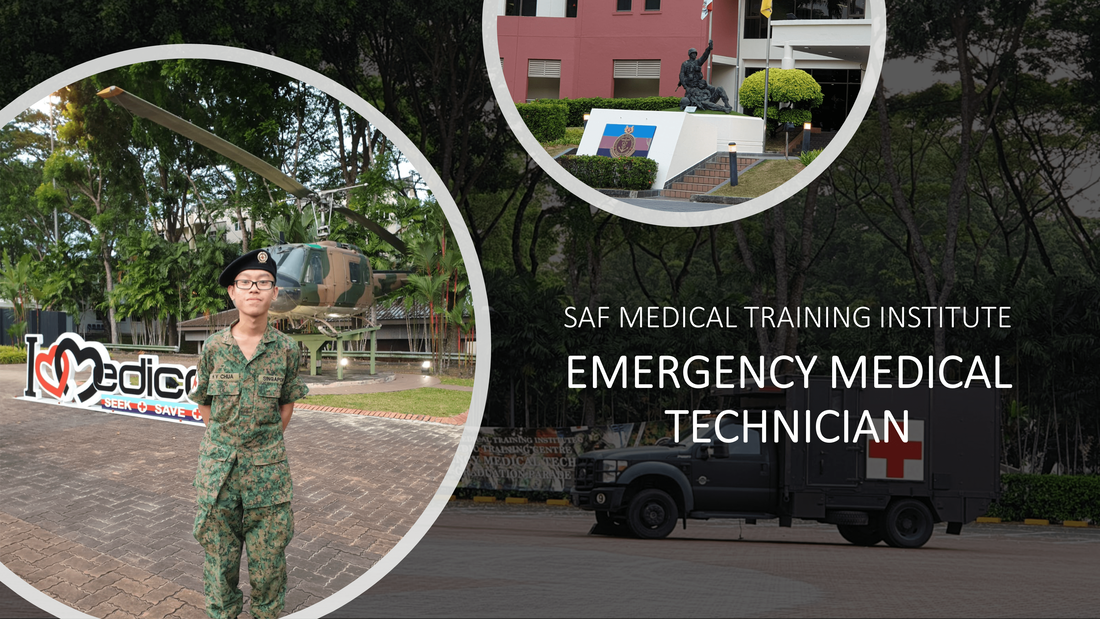Shortly after my graduation from Basic Military Training, I received my posting order as a Service Medic and it meant another 12 weeks of stay-in Emergency Medical Technician course at SAF Medical Training Institute, Medic Vocational Training School from 16th December 2019 onwards.
Background
I was taken aback. After 9 weeks of stay-in at Pulau Tekong which was dreadfully long, then another 12 weeks of regimental horror. Again, I found it very difficult to transit into the new phase with the unfamiliar faces, coupled with a wishful thought that Pulau Tekong was the only place in the military where regimentation exists.

Adjusting to Vocational Training Life
In the initial few weeks of my stay at Nee Soon Camp, I posted quite a number of stories on my Instagram and below are the select few.
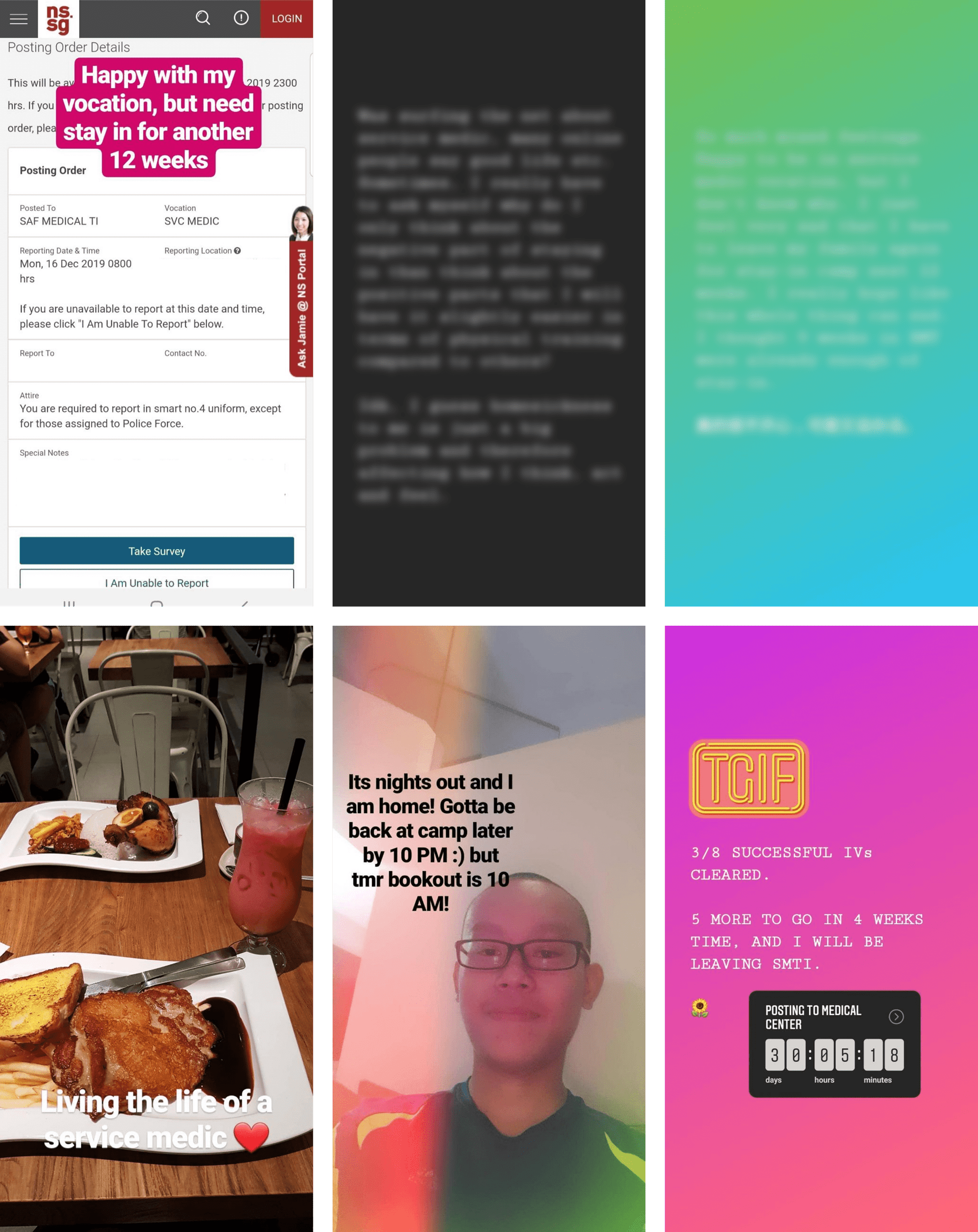
16th December 2019, my first day at SAF Medical Training Institute (SMTI) was not an exciting one. Separated from people whom I was already familiar with in BMT, I broke down again and wanted to go home. I dwelled on how am I going to survive in the next few weeks, despite the fact that I was already trained to be independent during my Basic Military Training. Perhaps, it was this feeling of disappointment that there continue to be more challenges after a tough journey in Pulau Tekong.
In the course, there were more combat medics than service medics, and our differences from combat medics were:
- Exempted from route march
- Exempted from combat phase (i.e. field camp and combat summary exercise)
Primary Healthcare Training Phase
Apart from these exemptions, we all had to go through the initial phases of basic emergency medical skills as well as primary healthcare. The physical training sessions at SMTI were more relaxed compared to the ones in BMT. On a daily basis, the routine would consists of “Project Pizza”, which otherwise known as spring cleaning, followed by a morning parade with recitation of the medic pledge, lectures in the auditorium, lunch break with some practical sessions in the afternoon and the day would end as early as about 6 PM. Thereafter, we are allowed to do our own self-study or rest before lights out.
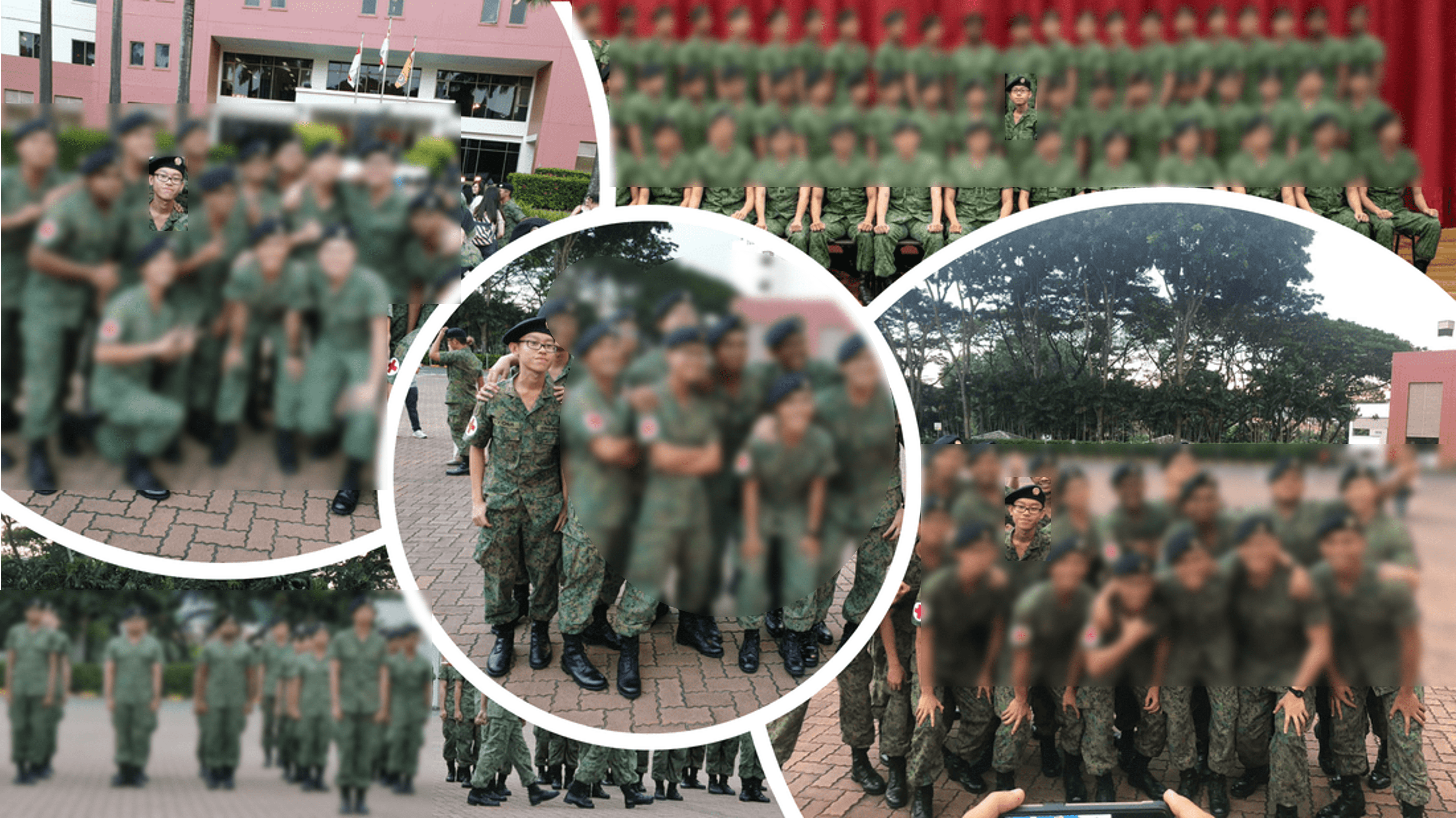
As a medic, one of the most important skills is to be able to perform Intravenous Infusion. A pre-requisite for graduation from the course, we were required to perform 8 successful attempts during the 12 weeks. Like many others, this skill was not the easiest for me to pick up because I feared the experience of poking others more than myself being poked. My platoon mates (or even trainees from other platoons) had to take turns to provide our arms for each other to perform the IV attempts. More often than not, a group of us would be called to render our arms as “spare arms” in the event that another platoon did not manage to clock the successful attempt required for the week. Thankfully, the training was “progressive” as we started from a 22G needle, followed by a 20G needle before concluding with an 18G needle.
The High-Key Events
On top of IV, I also picked up other skills such as Patient Assessment, Basic Cardiac Life Support, Airway Management, Bandaging of Wounds and Administration of Medication. Often, I would gather with my group of friends to practice our skills in the evening and invite one another to “play casualty”. The experience was memorable as we frequently burst into laughter halfway in the practice session. However, for the Basic Cardiac Life Support (BCLS) course, I failed the exam several times before passing it on the third attempt. The Basic Cardiac Life Support course was difficult as one had to be familiar with the CPR skills for infants as well.
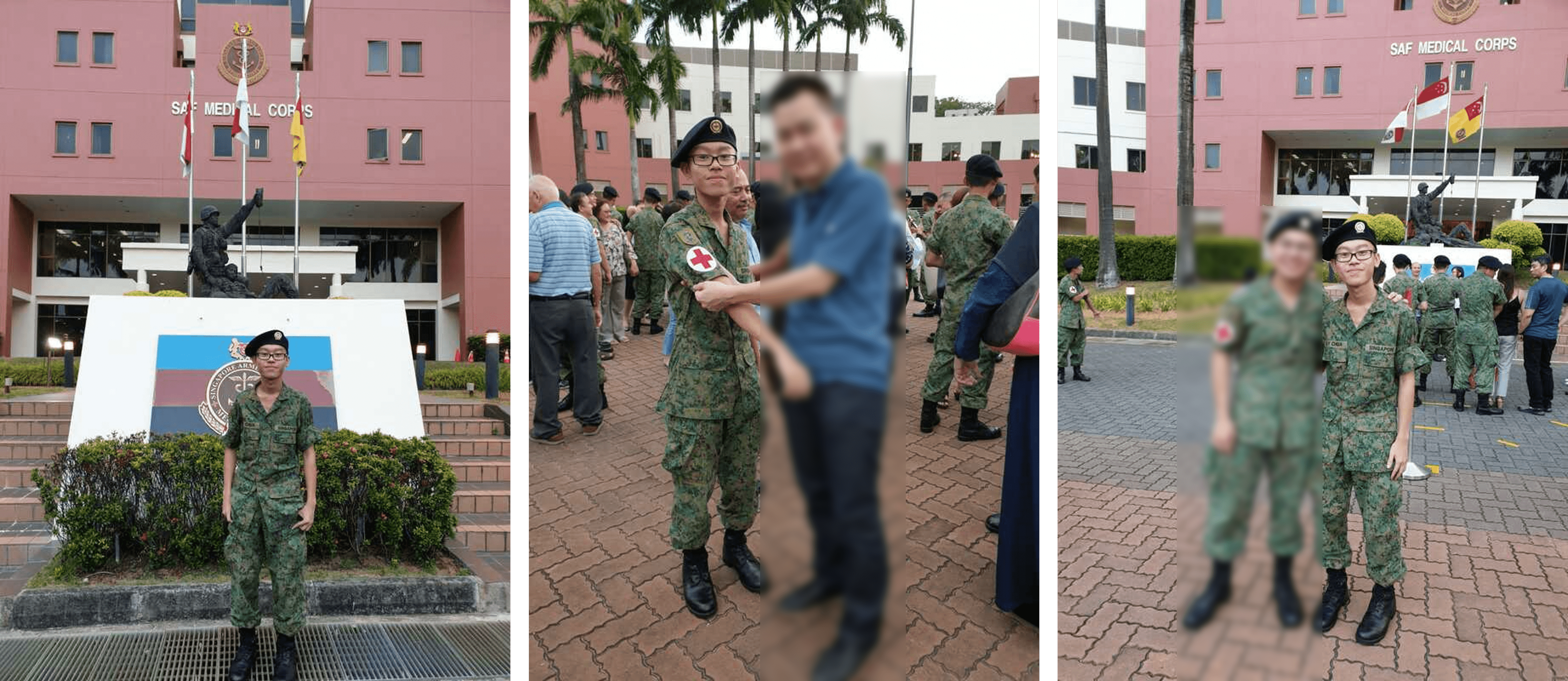
Majority of my time was spent in SMTI memorizing theory notes as well as the procedures to perform effective Patient Assessment. The days in Emergency Technician training passed much faster than in Basic Military Training mainly because the experience was not as dreadful as I thought and there were much more opportunities to rest and take breaks. Furthermore, there was a number of holidays including Christmas and Chinese New Year.
Putting the negative regimental life of army aside, there were indeed many takeaways of being a Medic as I gained relevant experience and skills that’s applicable to real life.
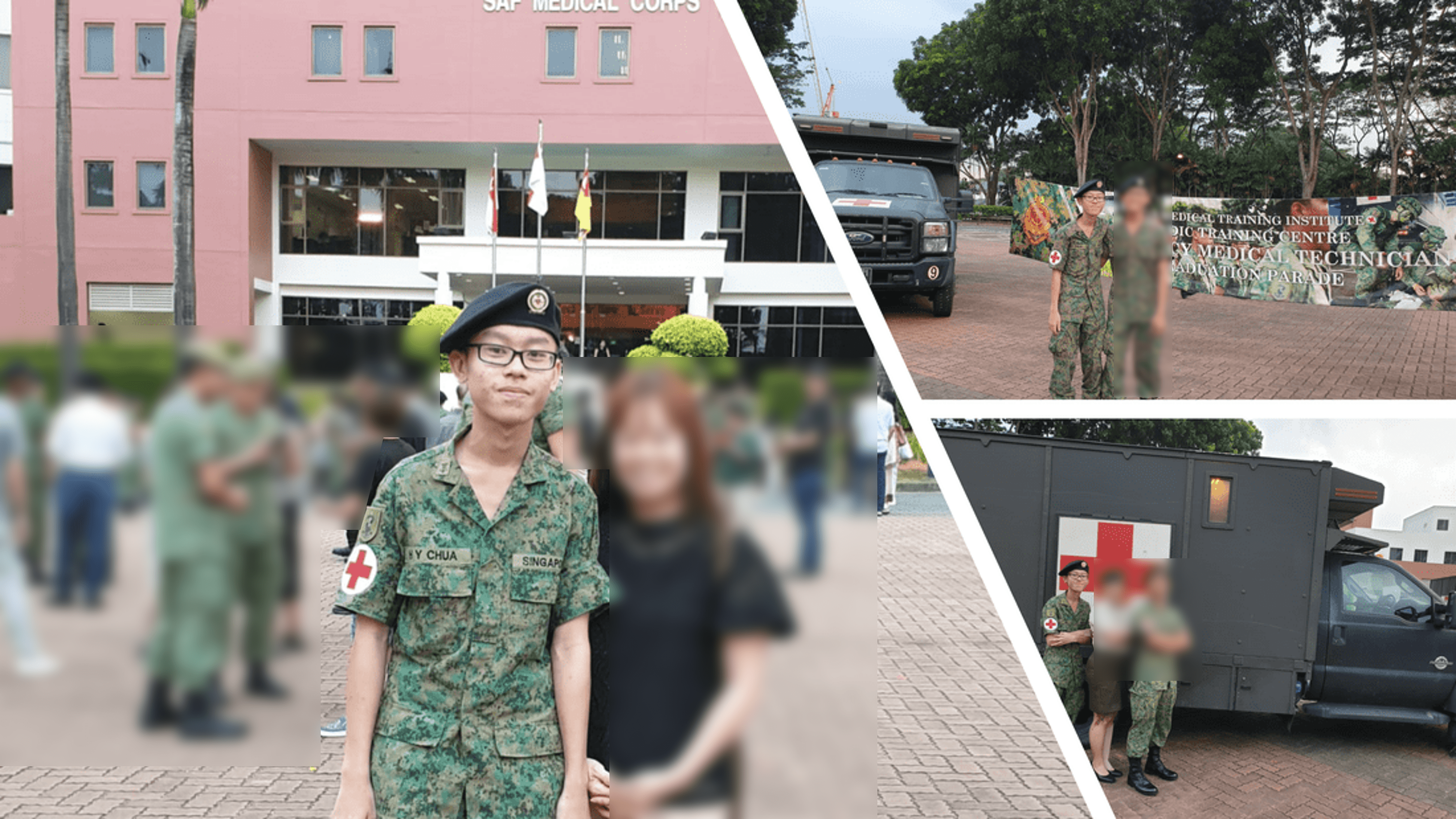
Upon graduation from the Emergency Medical Technician course, I received:
- Higher Certificate in Healthcare Support (Pre-Hospital Emergency Services), Workforce Singapore
- SAF (EMT) Emergency Medical Technician Certificate, Justice Institute of British Columbia
- Certificate in Basic Cardiac Life Support and Usage of AED, Singapore Armed Forces
- SkillsFuture Qualification Award (SGD $200)
NS55 Special Feature
In 2022, my story in the medic vocation was featured on NS55 Official Website, which seeks to commemorate Singapore’s 55 years of National Service.

“Having had a sheltered life before enlistment, going through the Basic Military Training and Emergency Medical Technician course was tough for me as I had to overcome the issue of my homesickness and frequent emotional breakdowns when faced with regimentation. Basic household chores such as tidying the bed and washing clothes were foreign to me and I had to learn from scratch.
Initially, I found it really tricky to be mentally resilient and optimistic through the journey. However, posting to the medic vocation changed my life and mindset. I knew I had a responsibility to save lives and take care of others when they are in need of medical assistance. Learning to be independent, I picked up key skills such as Basic Cardiac Life Support and Intravenous Infusion which I had never thought I would have to do. After my posting as an RSAF medic to Tengah Air Base, I had the opportunity to deal with different types of medical emergencies and work together with other medics in treating patients. I’m very thankful to all the commanders I’ve met who have helped me stay positive and constantly encouraged me throughout the past year. Despite the fact that I’m smaller in physical stature compared to the rest, they believed in my medical skills and that I would be able to do it."

